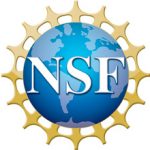Funding agency
Award number
CBET-1706050Dates
August 1, 2017-July 31, 2021Description
Major breakthroughs in the field of genomics, embryonic stem cell (ESC) biology, optogenetics and biophotonics are enabling the control and monitoring of biological processes through light. By incorporating light-actuated/light-emitting proteins into cells, key biological processes at the sub-cellular level can be controlled and monitored in real time. For example, cell development and fate may be effectively regulated by targeting key genes in the cell pluripotency network (such the recently described Integrative Nuclear FGFR1 Signaling (INFS) module) and by controlling the 3D genome architecture. While the very small wavelength of optical signals can potentially enable such precise control and monitoring, existing studies rely only on conventional optical sources and detectors, which, due to their size and capabilities, limit the applications of light-mediated bio-interfaces. In parallel to such developments, nanotechnology is providing the engineering community with a new set of tools to create novel nanoscale devices with unprecedented functionalities. From a systems perspective, plasmonic nano-lasers working in conjunction with nano-antennas can serve as nano-actuators of light-controlled processes. Similarly, nano-detectors enhanced with plasmonic nano-antennas can act as nano-sensors. Together, networks of nano-actuators and nano-sensors can control and monitor biological processes at the sub-cellular level with unprecedented temporal and spatial accuracy.
The aim of the project is to develop the first steps towards the control and monitoring of stem cell regulation processes with single-cell resolution and real-time operation thanks to the novel nanophotonic devices. The specific objective of this three-year-long effort is to develop a nanophotonic platform able to activate/inactivate gene expression and, thus, control stem cell differentiation in neuronal cells, by means of light-controlled protein-protein interactions. More specifically, the light-controlled molecular toggle-switch based on Plant Phytochrome B (PhyB) and transcription factor Pif6 will be utilized to control the nuclear fibroblast growth factor receptor-1 (nFGFR1), which is a master regulator of stem cell differentiation. To accomplish this ambitious goal, the proposed work has been divided into three intertwined thrusts. In Thrust 1, networks of arrayed nano-actuators at 650 nm and 750 nm will be developed to control the molecular toggle-switch based on PhyB/Pif6. Two strategies will be pursued. First, a broadband source (will be utilized to illuminate two interleaved plasmonic nano-antenna arrays designed to resonate at the required frequencies, respectively, thus, enhancing the radiation at specific frequencies and only at specific locations. Second, narrowband nano-lasers at 650 nm and 750 nm will be developed. This platform will provide spatial and temporal control of the illuminated area, for a which network controller will be also devised. In Thrust 2, the PhyB/Pif6 system will be used first for photo-regulation expression of proteins of interest in stem cells and, second, as light-based switch for protein-protein interactions. First, the study will focus on testing under which culture conditions actuation with 650 nm can activate an intracellular reporter, mCherry first and nFGFR1 later. In the second study, protein-protein interactions in stem cells will be evaluated by means of Förster Resonance Energy Transfer probes. Finally, in Thrust 3, the devices developed in Thrust 1 and the optogenomic constructs developed in Thrust 2 will be utilized for the first time to control genome function through regulation of gene activities and DNA topology.

